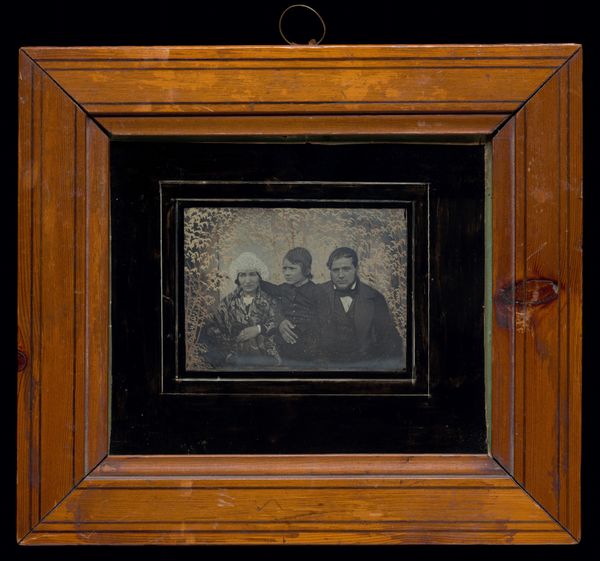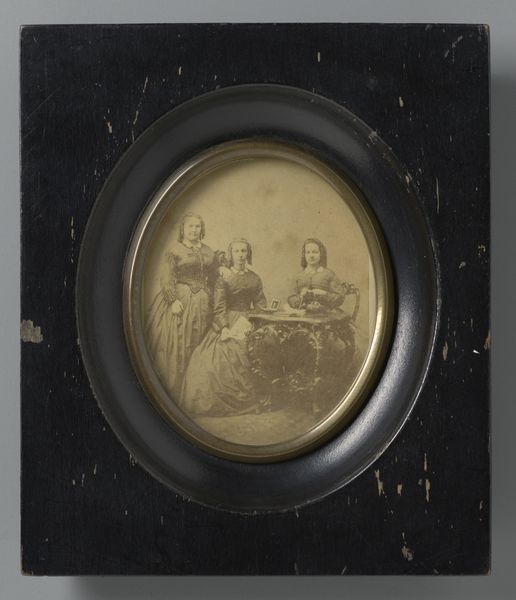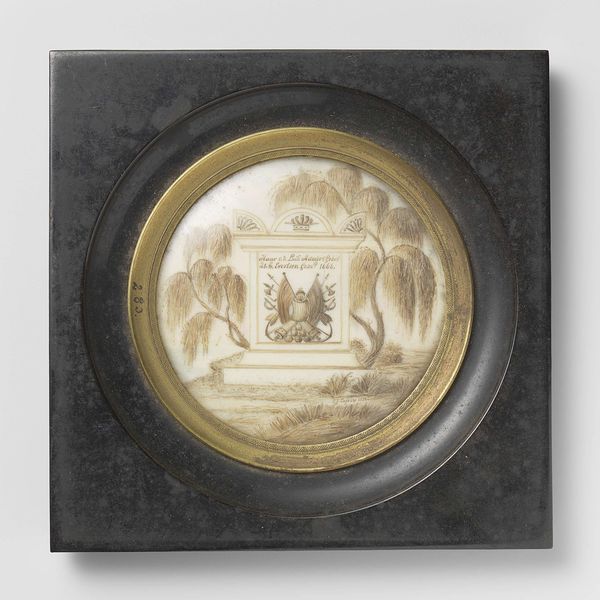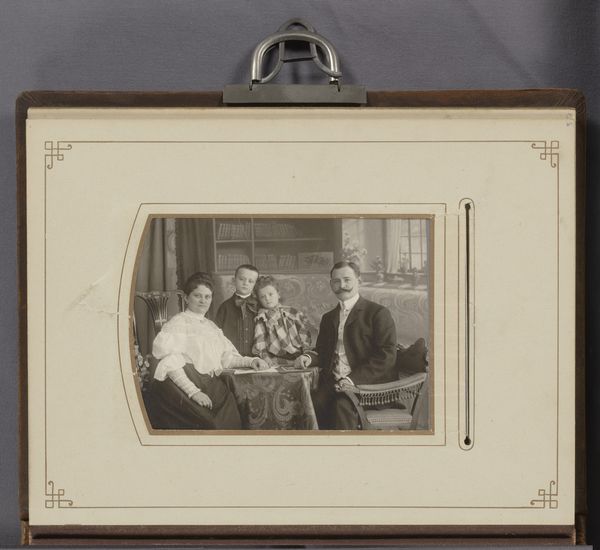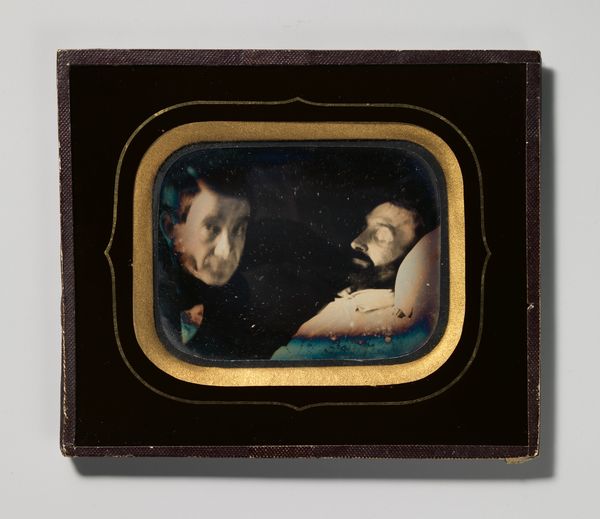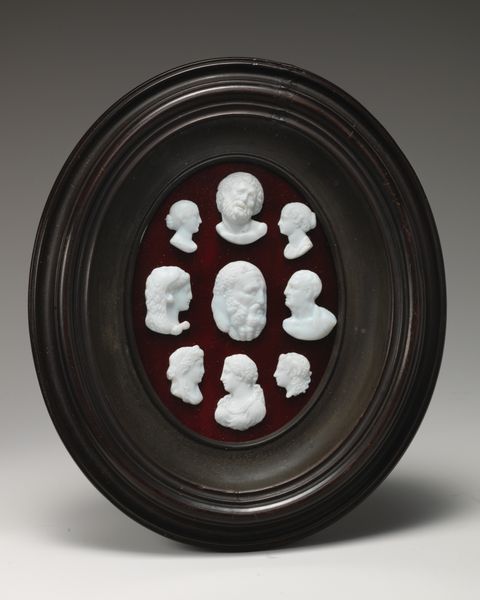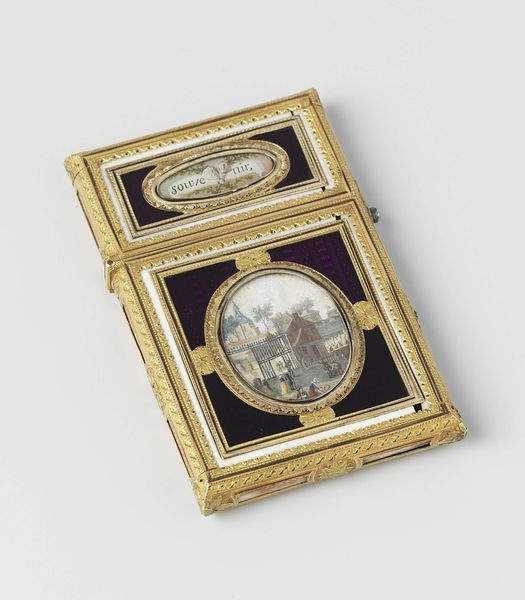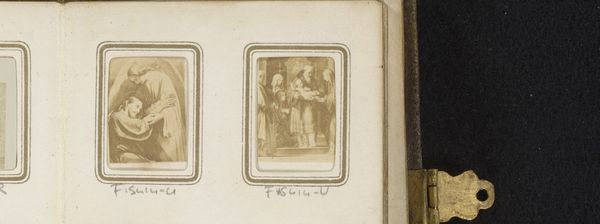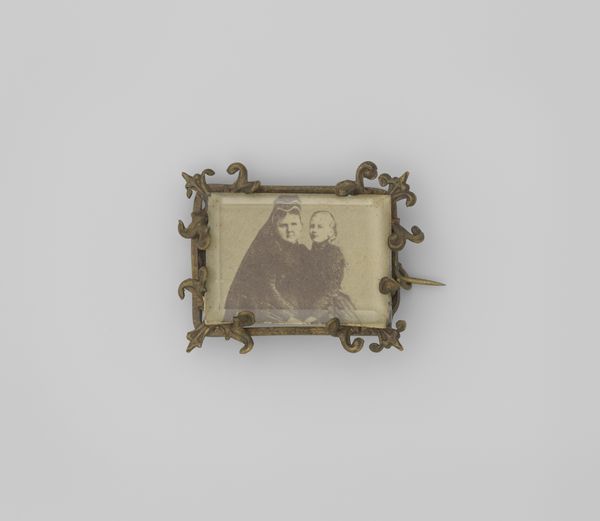
daguerreotype, photography
#
portrait
#
16_19th-century
#
daguerreotype
#
photography
#
group-portraits
Dimensions: width 110 mm, height 146 mm, height 315 mm, width 371 mm, depth 20 mm
Copyright: Rijks Museum: Open Domain
Curator: Here we have a daguerreotype portrait from 1867 by François Carlebur, titled “Portrait of an Unknown Family” residing here at the Rijksmuseum. Editor: My first impression is that there is a stiff formality, almost a severity, offset by the small children. You can see the details of their clothing and poses very well. There is a strong sense of a moment captured and preserved. Curator: The stiffness comes from a broader history of portraiture. Photographic portraits, while becoming more accessible, still carried a certain weight. It was a formal representation intended for posterity. It's also an amazing glimpse into 19th-century bourgeois life through clothing, pose, and the very act of commissioning this portrait. The emerging middle class sought ways to solidify their social position, and portraiture was key. Editor: I am interested in how the artist used a relatively new technology of the daguerreotype in particular, which allowed the precision to capture minute details. Consider how long they must have sat still to take it. One can only wonder about their relationships from this very considered production! What do you know of Carlebur's work? Curator: Carlebur wasn’t as known for innovation; he rather capitalized on this medium for a growing market for formal portraiture. His studio probably was busy capturing similar likenesses for aspiring middle-class families. I would consider him part of the movement to broaden the societal scope of portraiture. The industrial processes enabled that development. Editor: Exactly! He was leveraging new technology, using labour and material in his process in a way the older aristocratic portraits had no need for. But do you see this gold ornamentation on the backing around the oval? It elevates this piece! A lovely, thoughtful counterpoint! Curator: It suggests that someone in this family, or perhaps a later owner, greatly cherished this photograph as something worth preserving and adorning in a period that moved from custom work to machine manufactured aesthetics. Editor: This snapshot in time allows me to consider material and class dynamics through manufacturing that enabled an entirely new social landscape. Curator: From my point of view, it presents a lens to view and understand societal aspirations through how it enabled an industry with the family photograph.
Comments
No comments
Be the first to comment and join the conversation on the ultimate creative platform.

